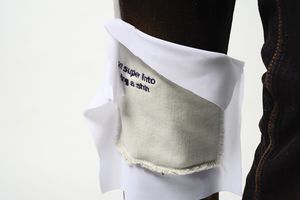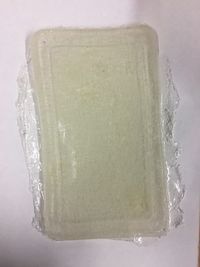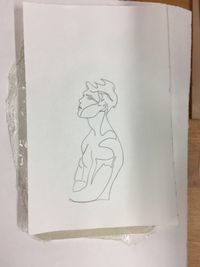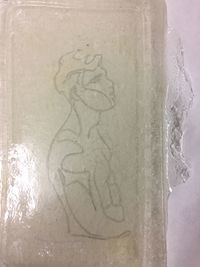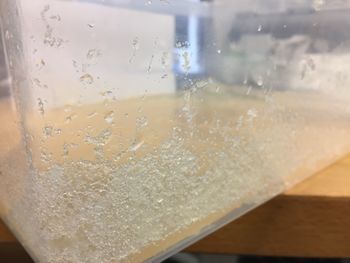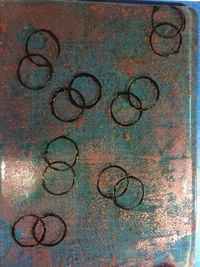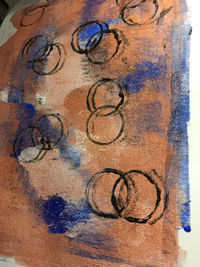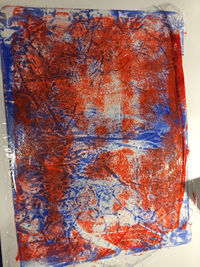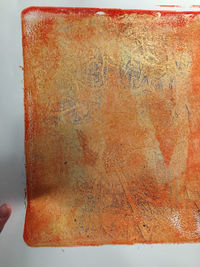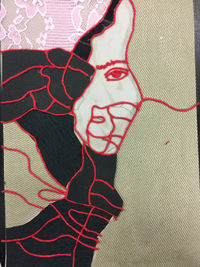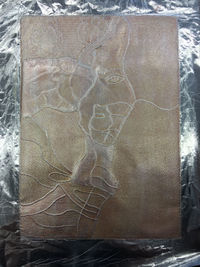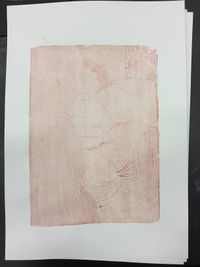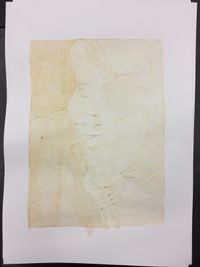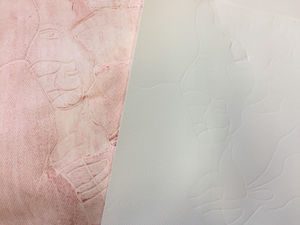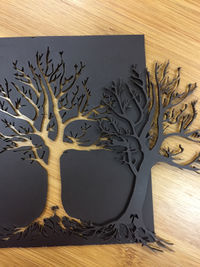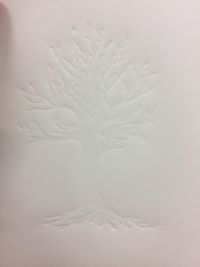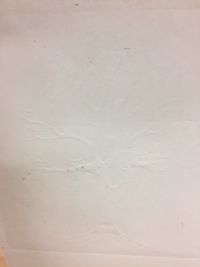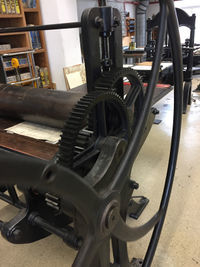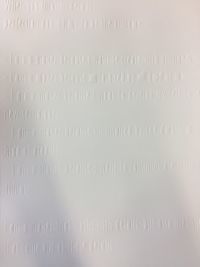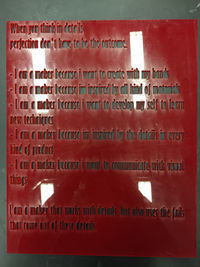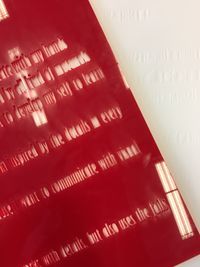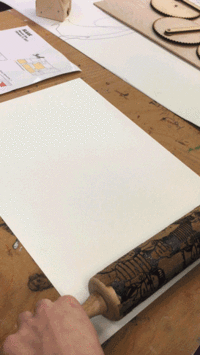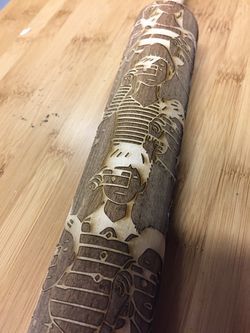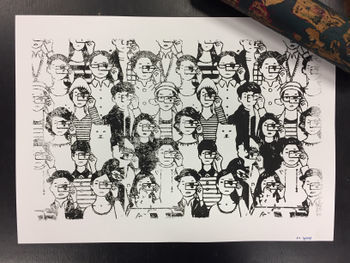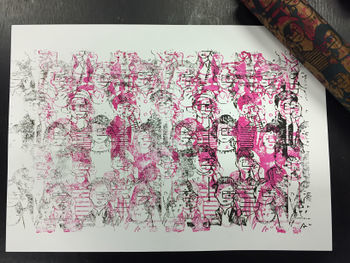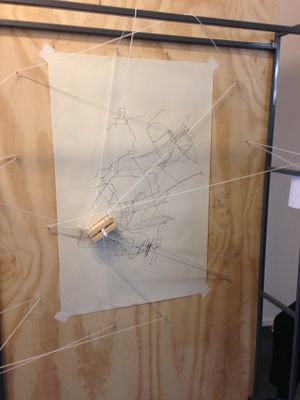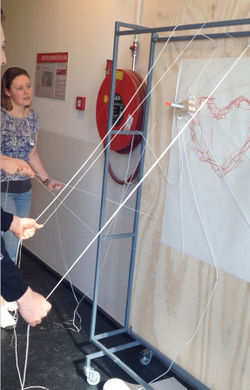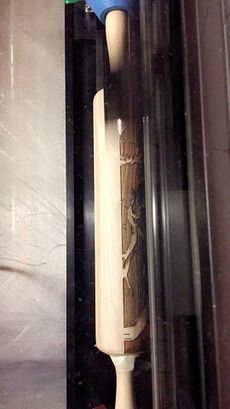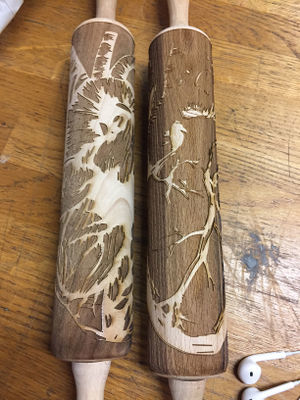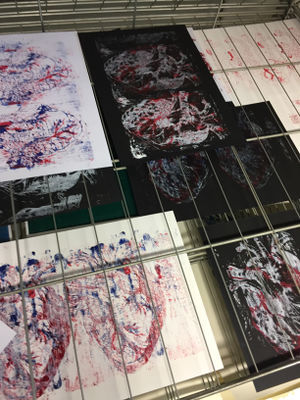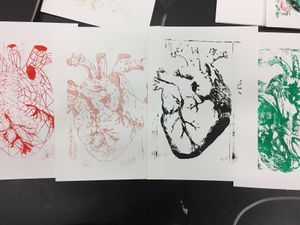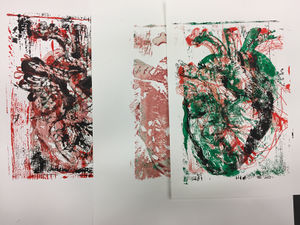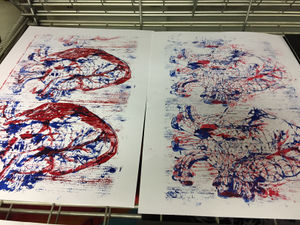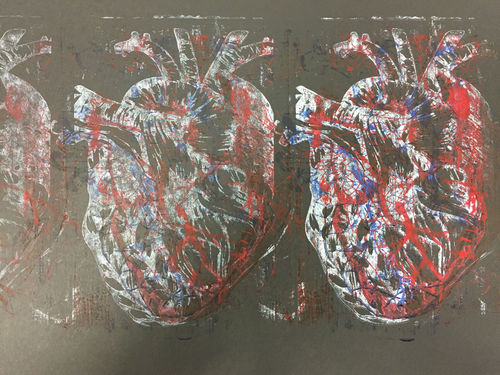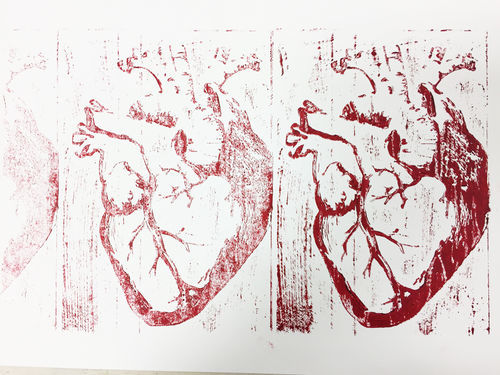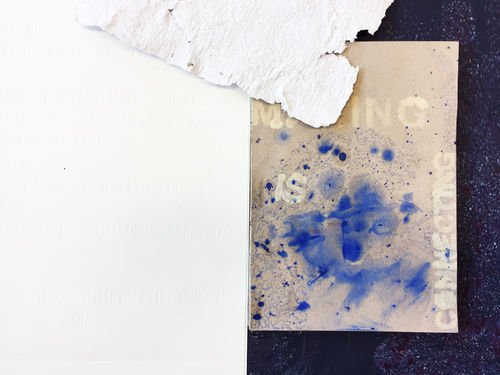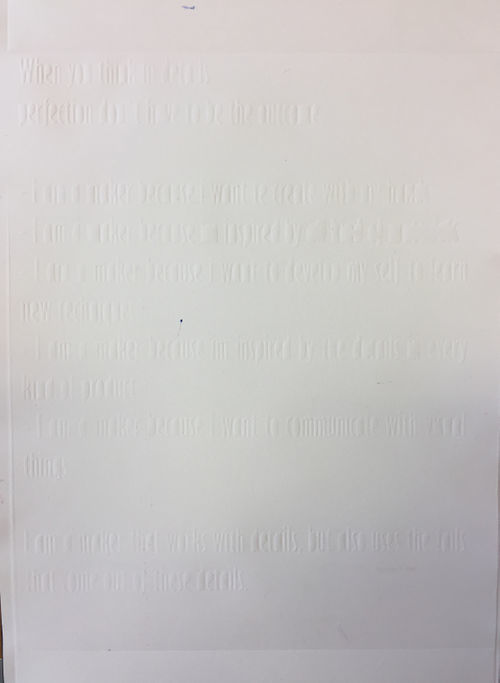User:Jessica Rijkers
JESSICA RIJKERS
FASHION DESIGNER
0908513@hr.nl
Contents
Printing Techniques
HISTORICAL EXAMPLE
Hectograph
Research
The hectograph is a printing process that involves the transfer of an original, prepared with special inks, to a pan of gelatin or a gelatin pad pulled tight on a metal frame.
[1]
It is also used to create unique acrylic paint prints. The gelatine hectograph has been commercialized by Joan Bess and Lou Ann Gleason. The hectograph has been plasticized and made more resilient. The materials used for printing on are almost as limitless. Any paper can be used. Fabric, plastic/acetate sheets, different types of tape, cardboard, wooden boards, sheet metal, almost anything that paint will stick to can be used. The prints are used in many different artistic applications.
For the recipe I used gelatin powder | 100 grams Warm Water 1-5/8 cups | 375 ml Glycerin 2-3/8 cups | 715 grams after 30 minutes in the freezer, the plate was ready and I could start.
I made some drawings with different kind of inks. Pencil, pen, lead, and carbon paper ink. I put the drawings upside down on the gelatin plate, the ink has to soak into the gelatine before you can use it to print. I found out that the pencil and carbon paper ink works the best to sock in the gelatin. When the ink is in the gelatin you can use a new paper to print the exact copy of the original. In the info, I found they were seeing that you can print again up till 100 times, but with the print I made is was only possible to print 2 or 3 times and the ink was not clear.
COMPARATIVE EXAMPLE
Monoprint VS Collograph
Research Monoprint: A monoprinting is a printing technique in which only one copy can be made. The technique is called monotype or monotype.
One plate is an image with ink (or paint). While the ink is still wet, it is printed on the paper. To create a second printing is not possible.[2]
Research Collograph: Collagraphy is a printmaking process in which materials are applied to a rigid substrate. The word is derived from the Greek word koll or kolla, meaning glue, and graph, meaning the activity of drawing. The plate can be intaglio-inked, inked with a roller or paintbrush or some combination thereof. Ink or pigment is applied to the resulting collage and the board is used to print onto paper or another material using either a printing press or various hand tools. The resulting print is termed a collagraph. Substances such as carborundum, acrylic texture mediums, sandpapers, textiles, bubble wrap, string or other fibres, cut card, leaves and grass can all be used in creating the collagraph plate. In some instances, leaves can be used as a source of pigment by rubbing them onto the surface of the plate.
Different tonal effects and vibrant colours can be achieved with the technique due to the depth of relief and differential inking that results from the collagraph plate's highly textured surface. Collagraphy is a very open printmaking method. Ink may be applied to the upper surfaces of the plate with a brayer for a relief print, or ink may be applied to the entire board and then removed from the upper surfaces but remain in the spaces between objects, resulting in an intaglio print. A combination of both intaglio and relief methods may also be employed. A printing press may or may not be used.[3]
For this example, i used two techniques that are the same in printing but different in structure. By laying several layers of paint and materials on each other you get a beautiful print The basic printing technique is simple. By laying several layers of paint and materials on each other you get a print texture, lay a sheet of paper over the paint, rubs the back of the paper a bit and pulls it up. The wet paint adheres to the paper. The interest and uniqueness of the prints come in by the marks made in the paint before laying the paper down.
For the second one, i made a Collograph. By applying different materials and different height differences on a hard surface, it gets in relief. I packed the mold with foil to protect him for the ink used for the printing. After using ink on the foil I put it under need the roller press. This machine presses the sheet of paper on the plate, by the height, the relief and the pressure of the press, the mold, and the ink is transferred onto the paper so that there arises a beautiful print with depth difference.
NEW SKILL
Blindly Press
Research Embossing and debossing are the processes of creating either raised or recessed relief images and designs in paper and other materials. An embossed pattern is raised against the background, while a debossed pattern is sunken into the surface of the material.
Blind embossing does not include the use of ink or foil to highlight the embossed area. The change in the dimensional appearance of the material is the only noticeable difference resulting from the embossing. The blind embossing process provides a clean and distinctive or subtle image on paper stock. It is best used to create a subtle impression or low level of attention to the piece, yet provide some slight form of differentiation for the finished work.[4]
This is a printing technique without using ink. you only use a mold where the print is cut out. Its best for the mold to be cut out of perspex, its a hard material and don't have wood grain, like when you use a wooden plate. With a big press and a lot of wait you can print the cut out in the paper. You lay the cut out on the press, put a paper on it an than you can roll. How deep the print will be in the paper depends on the sort of paper and the many times you roll over the paper.
First, i tried with a detailed cut out of a tree. After getting some feedback I tried to use a text to make it more interesting. I used my statement as the text to print.
SHARED EXAMPLE
For the shared example, we started separately to make a printing tool. It was the idea to don't tell each other what we made so that the next day the other people of the group had to find out what was made and how it has to be used. For this part, I made a printing roll.
After we tried all the tools, we planned to make a tool that only works when we work together. So we made a drawing machine with a lot of angels, every angle had his own side that moves the pencil. You really have to work together to make a nice drawing out of it. In the beginning, it was very difficult to work together like this. but after a few times trying we found a nice way to cooperate together and make the pencil draw in a good way.
PUSH TO THE LIMIT/FINAL ARTIFACT
For the Shared example i made a printing roll. I Thought it was very interesting to see how to engrave a round space and how detailt the print came on the paper. So I wanted to develop this further, I wanted to see how detailt i couth engrave the wooden roll before you coudnt see the print any more. I also wanted this to be my final example. It was a realy hard job to find a good pattern to engrave on the rolls. Becaus i am realy interesting in details i started thinking were dus that come from " the Heart". So i started drawing a human heart, I made 4 different stages for the rolls, every stage goos deeper into detail. I tryed to make every heart the same size, but after engraving them i found out that they didn't quite fit.
When i started printing I used different kind of inks and paint. At first i used acrylic paint, this worked quite good with my fist example. But after rolling i saw that a lot of the details had to much Paint in the interspaces. So i started to use the special ink from the publication station on oil base. This type of ink is thinner and dries less quickly, i rolled the roller in the ink and i could immediately see the differents with the acrylic. When i started printing in de order i made for the rolls i found out that its better to print it the other way around to see the effect of the print. i made a few test to see in wich way i need to print, and how the heart will be the best on each other. When you print every roll separately, you really see the print and the details in it. But when you print them together, it gets a new perspective and makes the print interesting to look at.
MAKING IS CONNECTING PRESENTATION
For the assignment that we got off our presentation, i connected two other works of students to my blind print. I wanted to show how to give another perspective on detailing in a print on paper. I choose one of the works of Fleur, how worked with a marbling technique and bleak to print text on the paper. It's the bleak technique what I like to be interesting in this work because of the way it reacts on the paper. The bleak pulls in the paper and changes the surface area so that the text is visible. I also choose a work of max, he made his own paper with water and natural products. What I like about this work is the roughness of the paper, you feel te structure of the materials he used and that gives a deeper input for me. Cause when you see it from a distance it looks like paper, but you have to feel it to see an feel the meaning behind it.
That's why I combined this three pieces. By each piece, you need to look really hard for the details to see the purpose.
WHY I MAKE?
When you think in details, perfection don't have to be the outcome.
When I started this project I thought I was a maker because I like to build and work with my hand. We made a 5 sentence list of things why I was a maker:
I am a maker because I want to create with my hands
I am a maker because I'm inspired by all kind of materials
I am a maker because I want to develop myself to learn new technics
I am a maker because I'm inspired by the details in every kind of product
I am a maker because I want to communicate with visual things
I thought the main sentence for me was “I'm inspired by all kind of materials” it is indeed a big part of my inspiration en trigger to make. But not my biggest. From when I was little I got a big interest to know how things are put together. With my grandma, I disassemble old products to see how they looked from within. The details that are inside every product got my big interest. After that, I started making, I'm a fashion designer so mostly I make a lot of clothing. In clothing, there are a lot of details visual, the kind of thread, the way of the grain of the fabric, wich button u choose. Every aspect has his details.
What I like so much about crafted objects, is that they are unique. Not one of them is the same, every object has a different kind of detail. Even when it supposed to be the same object, when you put them next to each other you see the different in detail.
I think that is why making is so important to me, the uniqueness in an object. The handcrafted feeling you get when you see it and feel it. That's why I chose Digital Craft as a practice.
When we got separated in groups we got the subject printing. At first, I was a lot of thinking about the techniques how to print on fabrics. but I eventually didn't choose for that, making is for me also a way to develop myself to learn new techniques. so I wanted to combine a real material with a digital print. a normal flat print is not that exciting I think. for me, it was important to give it a 3d effect. I wanted to bring details in a 3d printing tool so that the print will come off the paper.
So I started with some engravings, I wanted to trigger the machine to go deeper into detail. I engraved 4 different rolls, each of them has the same print but the other way of detailing. the first one is really graphic, only lines show the form, each roll goes deeper into detail and the last was ends it. the rolls separately give a form, but when you connect them together it supposes to give a new perspective of a detailed print.
Also, a blind print got me really inspired. I saw a lot of examples but never experienced it myself so I started to try this as well. Because you only print with forms and height gets the print really interesting in a way of shadow you see the differents in height. At first, I only used a flat print of a tree. the twigs where really small cut so this gave a nice detail in the print. After that, I started with a text. The perspective of text gave a whole different kind of detail on the print. Before you can read the text you have to get the right angle in light so the shadow shows the whole text.
For me, as a maker, it is also important to see the imperfection in things. Every detail has his goods and fails. That's what makes them so interesting, a detail can change a lot in visual communication.
Of course, I always learn from the mistakes I make entry every time to do it better. Every project has its goals and mistakes. And I'm glad a make that mistakes, as a maker you can't be happy with the end result. There is always something you would have don different if you did it again or what you would have left out or put in at the end. For me, as a designer and maker, it is important to learn. This way I develop myself each time in a new way.
I am a maker that works with details, but also uses the fails that come out of these details.
